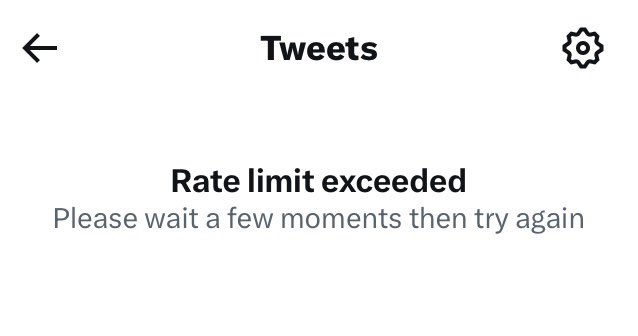Twitter explains why it sabotaged your feed without notice – but no end is in sight
You can blame the bots, apparently

On July 1, with no warning and little reason why, Elon Musk – the CEO of Twitter – said that Twitter would be imposing strict rate limits on how many posts users could view. Now we have an official reason why, but it's still unclear how long this will last.
When Musk put out his tweet he said that Verified accounts would be limited to reading 6,000 posts a day, unverified users to 600, and new unverified users to 300. His explanation for this sudden change was that it was “to address extreme levels of data scraping & system manipulation.” The limit has since been expanded to 10,000 for verified and 1,000 for unverified users, but exactly what the problem is remained uncertain.
To address extreme levels of data scraping & system manipulation, we’ve applied the following temporary limits:- Verified accounts are limited to reading 6000 posts/day- Unverified accounts to 600 posts/day- New unverified accounts to 300/dayJuly 1, 2023
A post Twitter made on its Business blog has finally expanded on why it chose to limit how many posts someone could read a day. Twitter explained that the move was one of its latest “extreme measures to remove spam and bots from our platform.” The post goes on to say that Twitter is working to prevent bad actors from “1) scraping people’s public Twitter data to build AI models and 2) manipulating people and conversation on the platform in various ways.” Twitter adds that the move’s “effects on advertising have been minimal,” likely in an effort to convince its advertisers that the posts they’re paying to promote are still being seen by Twitter’s user base.
Unfortunately for those of you hoping that post limits would be on their way out that doesn’t appear to be the case. Twitter’s blog post gave no indication of when or even if the limits will go away.
Is this the full picture?
So we have a deeper understanding of why Twitter is limiting access to tweets, but is this the full story? Some would argue not, based on previous reports that argued Twitter’s limits have nothing to do with data being scraped.
One alternative explanation was that Google was limiting Twitter’s access to its cloud hosting services – after it was reported last month by Insider that the social media platform hadn’t being paying its bills. It appears Twitter paid at least some of its debt to Google after new CEO Linda Yaccarino took charge however, suggesting that this isn’t the reason for the limits.

Another possibility came from web developer and Twitter user Sheldon Chang – with Chang speculating that the change was imposed because the platform was effectively DDOSing itself. DDOS attacks are when someone intentionally sends a lot of requests to a platform’s servers in order to overwhelm them and stop regular folks from accessing them; according to Chang, Twitter’s home feed wasn’t loading properly on the Saturday morning before Musk’s announcement yet the company was still making constant requests for data that never arrived. Chang argued that the resulting instability was caused by another of Musk’s recent changes which forces users to log in before they can view content on Twitter, however, this is merely speculation.
Get daily insight, inspiration and deals in your inbox
Sign up for breaking news, reviews, opinion, top tech deals, and more.
For now, we’ll have to go along with Twitter’s version of events until someone can prove otherwise, though the reasons do make some sense – particularly the part about AI. Considering Musk is working on his own generative AI, it would follow that he may not want his competitors to build models based on data taken from his social media platform.
Annoyed about the rate limits and want to leave Twitter? Here are three Twitter alternatives to help you move on from it. You might also want to check out Bluesky and Meta's Twitter rival.

Hamish is a Senior Staff Writer for TechRadar and you’ll see his name appearing on articles across nearly every topic on the site from smart home deals to speaker reviews to graphics card news and everything in between. He uses his broad range of knowledge to help explain the latest gadgets and if they’re a must-buy or a fad fueled by hype. Though his specialty is writing about everything going on in the world of virtual reality and augmented reality.